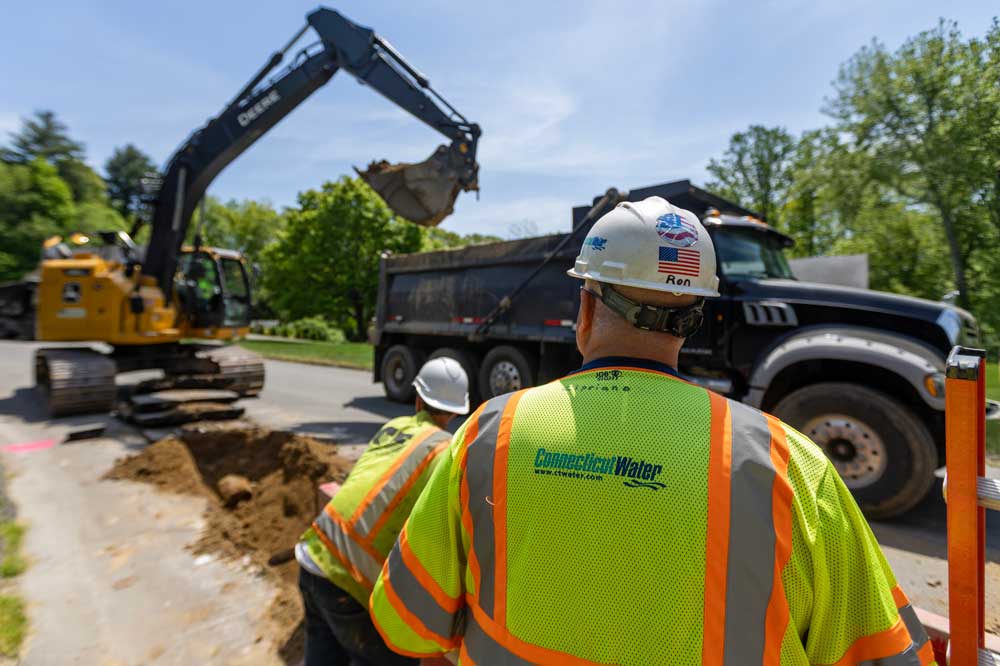Connecticut Water measures up to American Society of Civil Engineers 2025 report card for America’s infrastructure
CLINTON, Conn., June 11, 2025 — The American Society of Civil Engineers gave national drinking water infrastructure a C- grade, but Connecticut Water’s approach to infrastructure investments matches up with many of ASCE’s suggestions for workable solutions to ensure customers can access reliable, high-quality water now and in the future.
 In its 2025 Infrastructure Report Card, the ASCE cites aging and underfunded drinking water infrastructure as factors contributing to the C- grade. The EPA estimates investment needs of $625 billion over the next 20 years to address challenges across the country including aging infrastructure, emerging contaminants, and the increasingly severe effects of extreme weather.
In its 2025 Infrastructure Report Card, the ASCE cites aging and underfunded drinking water infrastructure as factors contributing to the C- grade. The EPA estimates investment needs of $625 billion over the next 20 years to address challenges across the country including aging infrastructure, emerging contaminants, and the increasingly severe effects of extreme weather.
“Many of us take for granted that when we turn on the tap, high quality drinking water comes out,” Connecticut Water President Craig Patla said. “But that only happens when we make the investments needed to keep our water infrastructure functioning at its best.”
Nationwide, drinking water infrastructure includes more than 2 million miles of underground distribution lines. Connecticut Water maintains about 1,800 miles of water main throughout the state. The company targets a replacement rate of 1% per year, falling in line with national recommendations. A 2018 study nationwide found an average replacement rate of .8% among water utilities.
In 2024, Connecticut Water invested approximately $44.5 million to replace 18 miles of water main, some more than 120 years old, through 22 projects across 18 towns. Between 2020 and 2024 CWC replaced over 500,000 lf (linear feet) of distribution piping and is targeting the same amount for the next 5 years. Many water main projects also include replacing fire hydrants for fire protection needs.
 According to the ASCE, “some of the nation’s oldest pipes were laid in the 19th century, and pipes laid post–World War II have an average lifespan of 75 to 100 years, meaning that many of even the newer pipe segments are reaching or have reached the end of their design life.”
According to the ASCE, “some of the nation’s oldest pipes were laid in the 19th century, and pipes laid post–World War II have an average lifespan of 75 to 100 years, meaning that many of even the newer pipe segments are reaching or have reached the end of their design life.”
While only about 30% of utilities have fully implemented an asset management plan, Connecticut Water maintains an extensive Infrastructure Management Plan. Connecticut Water experts track the age and condition of water pipes, the frequency of main breaks, leakage and lost water, and the fire protection needs of the community in determining what water mains to replace.
Utilities also face ongoing challenges addressing emerging contaminants as the science and technology evolves, such as per- and polyfluoroalkyl substances (PFAS), and the regulatory requirements needed to remain in compliance with the Safe Drinking Water Act, according to the report. Connecticut Water voluntarily began testing their water systems for PFAS in 2019 and has tested all water sources. PFAS test results are available in their Water Quality Reports, and the most current PFAS sampling data by water system can be viewed on the Water Quality Reports page.
“We look to the American Society of Civil Engineers to provide us with a glimpse into the future of water infrastructure and measure how we are doing in comparison,” Patla said. “I’m proud of the passionate water professionals at Connecticut Water who dedicate themselves to bringing our customers reliable, high-quality drinking water in the face of these challenges.”